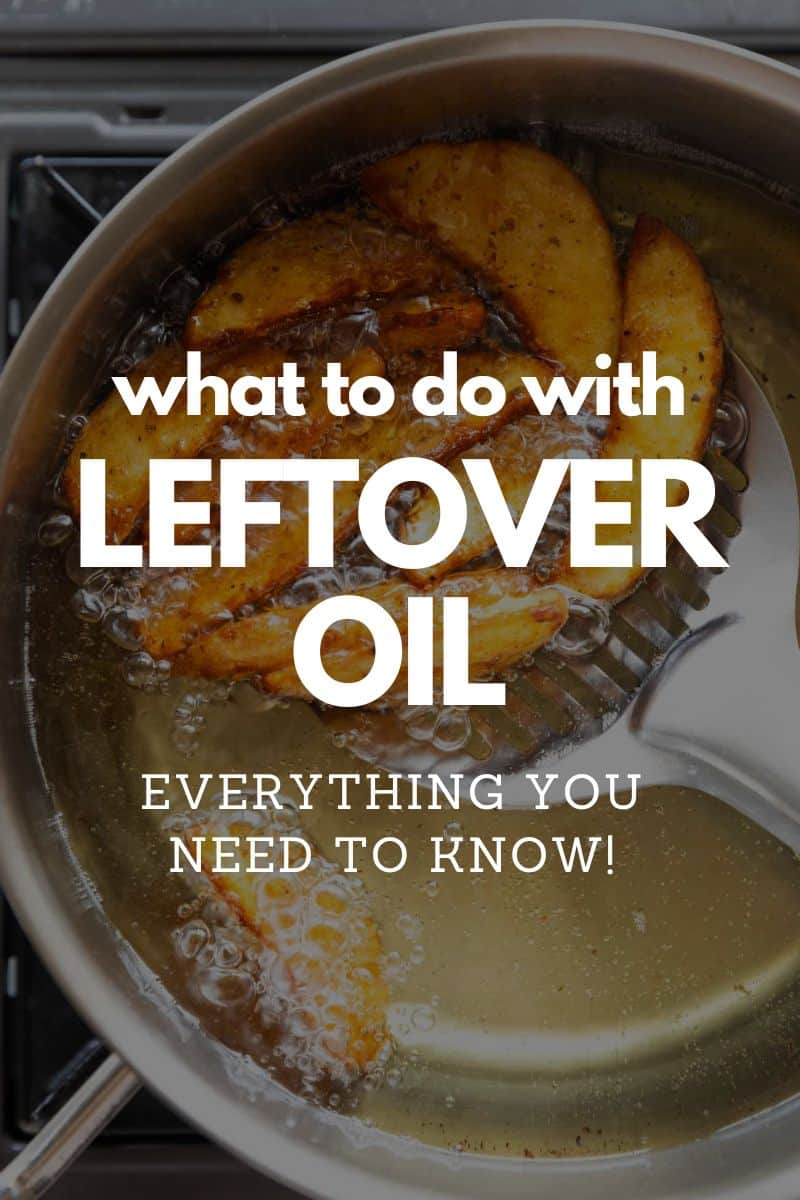What to do with leftover oil after frying? Can it be reused? When does fried oil go bad? I am going to answer all of these questions and so much more in this article.

Making fried food at home is one of the best ways to ensure that it’s completely clean and safe as you know exactly what’s going into it! This is one of the reasons why you’ll often hear me say that even fried food can be healthy-ish if it’s made in your own kitchen.
But a major question that always comes up after making anything deep fried is what to do with all that leftover oil? Throwing out leftover oil and reaching for a fresh batch each time is not only wasteful, but also quite unnecessary. And the good news is that with just a few steps, you can reuse all of that oil multiple times. And it is absolutely safe too! Scroll down to find out everything you need to know about storing and reusing fried oil..
First things first, what happens to the oil after deep frying?
When oil is used for frying, the high temperatures break the molecules and fatty acids. With the increase in the free fatty acids, the smoke point of the oil declines. Additionally, the oil also tends to absorb the flavour of whatever it is that you’re frying. Lastly, if you’re using batter, flour or breadcrumbs as a coating, it might leave behind some residue in the frying oil, which could alter the taste and shelf life of the oil.
What to do with oil after frying?
But it is still possible (and recommended) to reuse that oil. Here’s how to store the oil after frying to make sure it is safe for consumption and lasts longer:
Cool: After you’re done frying, allow the oil to cool down completely. This may take a couple of hours or longer, depending on how much oil you’ve used.
Sieve: Once it’s cooled down, strain the oil through a fine meshed sieve. You can even add a layer or two of cheesecloth if your sieve isn’t fine enough. This is a very important step as it helps to catch any residual burnt food bits, which if left in there, can make the oil taste weird when reheated. You may have to repeat the sieving process more than once if the oil has a lot of burnt bits.
Store: Finally transfer this oil to a clean and dry container. Keep the container in a cool and dry place, away from any direct heat sources such as stove, fridge or the microwave.
Reuse: At this point, the oil is ready to be reused for just about anything. Even though you can reuse deep fried oil for deep frying again, I personally don’t prefer this. But apart from that, I reuse the oil for all kinds of cooking - from making sabzis and curries to using it for tadkas and in stir fries.
When to throw out frying oil
There is no set timeline for when oil goes bad. It mostly depends on the type of food it was used to fry. Flour or breaded foods tend to leave behind more particles, which means the oil will tend to degenerate faster and have a shorter shelf life. But if you’ve used the oil to fry battered or bare foods such as French fries or pakoras, then it may last longer.
However, since there is no set time after which frying oil goes bad, it is best to use your discretion. If you notice any changes in the colour or texture of the oil, it is best to discard it immediately. A weird, nasty smell would be another good reason to throw it out.
If you want more information on some deep frying basics and how to check the temperature of oil before deep frying, make sure to check out this article.
If you are looking for a little deep-fried snack inspiration, here are some of my favourite recipes you should check out:
- Super crispy masala vada
- Mirchi bajji - 2 ways
- Perfect pooris
- The best indian punjabi samosa
- Chicken 65 - spicy & crispy
- Veg cutlets with potatoes and beetroot
- How to make crispy fried noodles at home
- Veg spring rolls
- Perfect French fries
- Paneer pakoras - 2 ways
The post <strong>What to do with leftover oil after frying?</strong> appeared first on My Food Story.

0 Comments